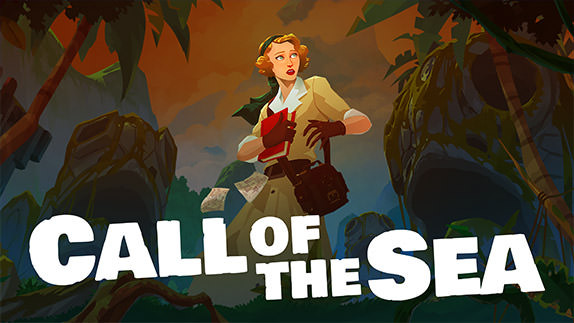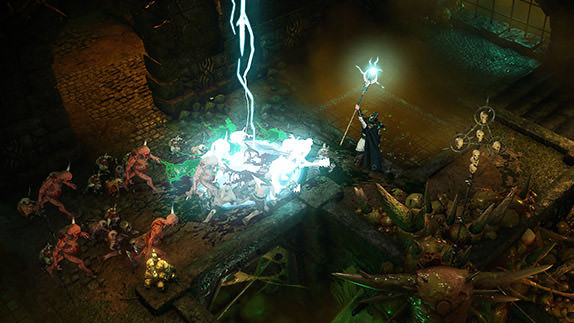The King of Fighters XIV Review

 By Kevin Mitchell | August 22, 2016
By Kevin Mitchell | August 22, 2016
The most renowned arcade fighting game series has returned to home consoles, or in this case just PlayStation 4, after a six-year hiatus—the largest gap since the series began in 1994. Developed by SNK, The King of Fighters XIV marks the first time a title in the main series has been fully rendered in 3D, although the fights still take place on a 2D plane. While I was initially saddened to see the game transition to 3D visuals during its reveal, the game has won me over the more I've played. SNK has made some notable changes to the series, bringing back mechanics from earlier games while adding an interesting auto-combo feature to help entice newcomers and gain further mass appeal.
KOF 14 features plenty of different game modes: both online and offline multiplayer, various single-player modes, a sizeable roster that tops out at 50 characters, and 16 different canonical teams. You aren't limited to selecting your three fighters from the same team, and I can't recall any matches where I did just that. In traditional fashion, KOF 14 is all about one-on-one combat, with teams of three per side. Certain modes allow for single-character matches, but the series prides itself on three-on-three contests. As one character is defeated, the next will jump into the action to mark the start of a new round. There are plenty of returning characters from across the entire KOF timeline, alongside SNK's newly created newcomers to the series. It's quite a diverse cast with different fighting styles, and you'll surely find a team of three to complement your play style.
Although it has been quite some time since I last played a KOF title (KOF 13 released back in 2010), the action appears slower, and it may take some time for hardcore fans to get acquainted with the changes. Some characters look and feel much better than others, while some have transitioned less than stellarly from their classic hand-drawn 2D sprites. The lighting and small details on the characters are impressive, and the visuals are much cleaner than the initial reveal. The animations are inconsistent, however, with a couple that are downright atrocious, but most get the job done. This isn't the same type of character art you would expect from the KOF series, but it's manageable thanks to the amazing game mechanics.
The fighting mechanics borrow pieces from previous iterations and introduce new techniques that will open the game up to a wider audience. The aforementioned inclusion of "Rush" allows for a single-button combo system using only light punch. You must be quite close to your opponent to pull it off, and I'm not sure how often you'll see someone use it in competitive play. Super special moves can be performed at the cost of one bar from the power gauge. You'll be doubling up the directional input to trigger them, compared to the standard special moves, so you won't have to alter much to pull them off when needed. If you have two or more power gauge bars filled, you can perform max super special moves. These are devastating to your opponent and can also be performed while in Max mode if you have another power gauge available. With multiple methods of canceling moves into these types of supers, the gameplay opens up depending on your approach.
The cream of the crop in terms of a character's arsenal comes in the form of Climax moves. Using three power gauges, these can turn a match around and are accompanied by a short cinematic. The tutorial does an outstanding job introducing all the different movesets for anyone unfamiliar with the KOF style of fighting. Everything from rolls (moving through attacks), dashing, the multiple types of jumps, and all the different special moves are on display for you to learn. Once you master the mechanics, head to training mode to perfect your favorite character's special moves.
The hallmark of the KOF series has always been the different ways of canceling moves into more powerful super moves and combos. As long as you have spare power meter, you can cancel into the next tier version of special moves or even different attacks. It's much more simplified in KOF 14 than in previous titles.
Like previous games, KOF 14 includes a story mode that pits you against ten stages, including two boss battles. The narrative isn't close to the quality seen in the previous two Mortal Kombat games or even the DLC content for Street Fighter V, but there are a couple of memorable moments. There are unique character endings if you pick one of the 16 canonical teams. Upon completing a match, you'll unlock a random gallery item, highlighting diverse artwork from the series. KOF 14 includes a host of single-player modes, local multiplayer, and online multiplayer with revamped netcode.
My biggest complaint about KOF 13 was the less than stellar online experience on consoles. After spending 20+ hours with the game and playing dozens of matches online, the servers have been solid. Up to 12 players can join a matchmaking unranked game room and set up individual matches with various rule sets. Players waiting in the room can chat between matches. Ranked matches still require you to search for opponents after every match.
Simply Put
KOF 14 stays true to the KOF formula, but the move from hand-drawn sprites to 3D character models won't appease everyone. There is the occasional stiff-looking animation, but the gameplay and pacing are currently unmatched in any other fighting game series. With a plethora of single-player and multiplayer modes (both offline and online), KOF 14 is the most content-complete fighting game on the market.
Note: The King of Fighters XIV was reviewed on PlayStation 4. A digital copy of the game was provided by the publisher/developer.




